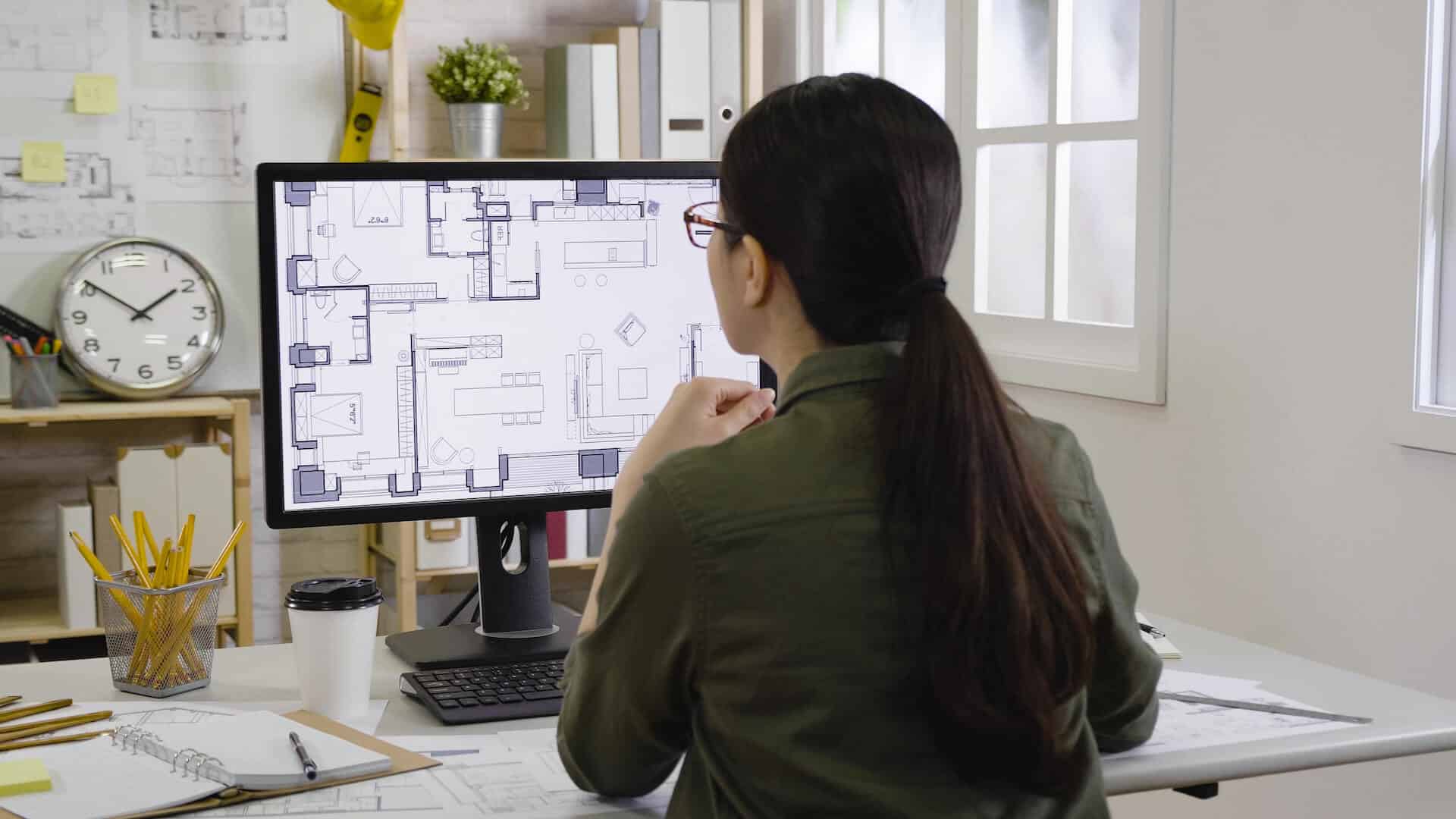Optimizing the office seating chart is one of the simplest ways to optimize the office. But it’s much easier said than done in a hybrid workplace. Today’s office seating arrangements are increasingly complex. They need to accommodate social distancing, flexible working, a variety of new work environment types, and a distributed workforce—often, all at the same time.
In other words, a homemade paper map of your office floor plan just won’t cut it anymore. Even for the craftiest of office managers.
In this article, we look beyond the paper map. We explore how to create an office seating chart for your modern, hybrid office.
7 necessities for creating office seating charts in a hybrid workplace
Every office needs an office seating chart.
Historically, in the era of cubicles and strict 9-to-5 schedules, these charts were relatively static and straightforward.
New employees would be given the same paper chart to navigate the office that facility managers (FMs) used to plan the next simple iteration of who sits where.
Assuming the office was small enough, and stable enough, these simple seating plans would usually suffice.
But managing hundreds or thousands of employees across multiple floors, or dealing with rapid growth, could add a level of complexity that would require lots of extra work, lots of Excel docs and chart templates, and maybe consulting with an expensive space planner to boot.
Thankfully, as the workplace is evolving to embrace both hybrid work and flexible seating, how we create seating charts is evolving, too. With the right software, FMs can now easily and effectively create a fluid office seating chart to accommodate the needs of all team members.
When implemented properly, this can lead to a better office design. Plus, it can lead to a host of benefits that we’ll explore further below. Hint: who sits where is much more critical to workflow and productivity than many realize.
Ultimately, to best support your modern office floor plan, look for seating chart software that includes the following seven features. These tools will help create a much more efficient office, no matter what hybrid work model your office uses.
1. A visual directory
Dynamic offices need more than a basic seating chart, especially for new hires.
Instead, everyone can benefit from a complete floor plan that includes details about any resources. This can include things like printers or filing cabinets, along with the office seating chart. Providing this enhanced visibility can dramatically improve the workplace experience in any office.
For example, with Visual Directory, users can instantly answer questions like:
- What is the office like today?
- Where will I be sitting?
- Who else will be in the office?
- Where are my coworkers sitting?
It’s a critical tool for creating and sharing your office seating chart. It’s used by companies like Harry’s, a company that sells quality shaving and grooming products. Harry’s has a large, international real estate portfolio. Specifically, Harry’s uses Visual Directory to streamline onboarding and simplify office moves.
“Outside of my Workplace Experience Team’s needs, Visual Directory is incredibly helpful for our employees navigating the office, and for visitors and new hires who need to familiarize themselves with the office layout,” says Celeste Candela, Workplace Experience Manager at Harry’s. “If we were using a manual process to manage moves and floor plans, there wouldn’t be an easy way to share it. There’s no way our floor plans would be as visible as they are with Visual Directory and Kiosks.”
2. Reliable wayfinding
Wayfinding has always been tricky for large organizations. It’s also been tricky for new hires trying to get the lay of the land.
And when dealing with hybrid employees who only use the office frequently, wayfinding can be much trickier. Even in smaller offices.
A Senior Office Workplace Survey found that workers spend up to 60 minutes a week in their quest to find desks, spaces, or colleagues. Meanwhile, 37% found it time consuming to find an employee in a different department or area. Not only is this wasted time. It’s also incredibly frustrating and demoralizing.
You can’t assume that everyone is going to know where everything is anymore. Therefore, the ideal office seating chart will integrate with wayfinding signage that also includes the location of critical resources.
3. Office neighborhoods
Office neighborhoods are emerging as one of the best collaboration strategies in the workplace.
With this workplace strategy, instead of assigning workers to a desk, they can be assigned to a ‘neighborhood.’ This neighborhood is a bespoke area of the office. It’s usually dedicated to a specific team, department, or project. Neighborhood layouts can also be used to create designated areas for specific purposes, like quiet spaces for heads-down work.
Good working neighborhoods are a surefire way to ensure the right people are working close by… Without confining any one person to any one desk. Even without an assigned desk, workers can still be assured they’ll always be sitting near the people they like and need to work with.
Not only can this create a more collaborative workspace, but a more enjoyable and engaging one, too.
Of course, office neighborhoods also amplify the need for flexible seating charts. Meaning FMs should seek out solutions that make this easy. For example, OfficeSpace-exclusive features like team-managed seating, multiple seat types, automated permissions, and neighborhood reports all dramatically simplify the seating chart process.
“When used well, Office Neighborhoods can make the office a much more fun place to work, and they can invite people back to an environment that—let’s face it—has changed a lot in the last two years. It’s a welcoming and pleasant way to encourage people to give the office another shot in a very different world than it was before the pandemic.”
Jordan Y., OfficeSpace Product Manager
4. Allow for flexible seating
Given the employee demand for a more flexible work environment, companies are now clamoring to provide meaningful flexibility.
But despite the many benefits of these flexible work arrangements, they also provide a big challenge to FMs and other space planners. You can’t make a static seating chart of who sits where, when you don’t have assigned seats.
FMs should therefore look for an office seating chart solution that accommodates hot desking, office hoteling, and other dynamic workstations.
5. Collaborative spaces
Hybrid work doesn’t just change how we use our desks. It also changes how we use our war rooms.
Companies across the board are reimagining how they divvy up the office between private space, quiet space, and collaborative space. Many cutting edge industries (like software companies and those in biotech and pharmaceuticals) are doing away with private offices altogether.
But even in the most open of open offices, people will still need access to huddle rooms and other private yet still shared spaces.
Moreover, as we return to the office, people often come into the physical space specifically for collaboration and meetings. So they need to be able to easily access conference rooms, huddle rooms, or any other shared spaces they might need.
Good meeting room booking software and meeting room digital signage can dramatically improve this process.
Moreover, these spaces can be part of an overall office floor plan that integrates with the office seating chart. This makes it incredibly easy for everyone to find exactly the kind of space they need, every single time they come into the office.
6. Convenience
Thanks to the pandemic-fueled rise in remote and hybrid work, companies are now working to create digital workplace solutions. These solutions can unite all workers, wherever they are. Through this process, one thing is becoming clear: to get buy-in, these solutions have to be incredibly convenient and intuitive.
Adapting to this ‘new normal’ is a real challenge for everyone. So removing barriers is one of the best ways to make it easier and even fun for people. The tools that workers use to access their seating chart and book their desks and rooms should meet them where they are.
Of course, many workers will find themselves booking their desks on their desktop, toggling to a new tab on their browser while they consult their calendar.
But ideally, they’ll also be able to do this via mobile app on both their iOS and android phones. And if the same app handles and simplifies request management, all the better.
OfficeSpace seating charts also integrate with Microsoft Teams—so you can find people, desks, and resources in a Teams chat window.
They integrate with Slack as well, allowing you to find what you need across your organization using the /find command.
“Having a tool like OfficeSpace bridge the divide between our physical and digital workplaces makes it easy for our people to connect with coworkers, find shared desks, and seat themselves, which just adds to the overall experience for every employee.”
Alicia Murrell, Workplace Experience Manager, Shopify
7. Helpful insights
Hybrid offices are incredibly fluid. And while the pandemic may be easing, we’re still experiencing a great deal of churn and uncertainty. The more insight FMs have into their office, the better they’ll adapt to any changes on the ground in a practical way.
As covered, it should be easy to update your floor plans in real time, using all the tools mentioned above.
But there’s a difference between easily making a seating chart, versus easily making a seating chart that is optimized to improve space utilization and the overall office.
For these reasons, the same platform you use to create your office seating chart will ideally also give you actionable reports and analytics. This can help you find information about how your people are interacting with that chart.
Armed with this data, you’ll be better able to accommodate new hires (even lots of them). Also, you’ll be able to manage moves (even big ones), and ultimately provide a much better hybrid workplace experience.

Use seating chart software to solve the biggest pain point in hybrid working
Rapidly pivoting to remote work during the pandemic was a major paradigm shift. One that has permanently changed how we understand and appreciate working from home.
Moreover, it has also emboldened workers. Workers, by almost all measures and studies, have enjoyed the flexibility and autonomy they’ve had over the past few years.
It’s becoming more and more clear that most people want to have a flexible hybrid schedule. And that when they do come into the office, they do so to enjoy high quality, face-to-face interactions with colleagues.
The problem? If there’s a lack of visibility around who is using the office, workers don’t know how to optimize their own calendars, to ensure they’re coming into the office on the right days.
Like one employee of a large payroll company told Vox, “if I go into the office and there are people but none of them are on my team, I don’t gain anything besides a commute.”
OfficeSpace created an incredibly popular and incredibly user-friendly feature to the Visual Directory to address this problem.
Who’s In?
Using ‘Who’s In,’ employees can instantaneously ‘see’ who’s currently in the office and who’s going to be coming in.
They can then pick a desk that’s near the right people, or decide to come in on a better day to better align themselves with the right colleagues.
Ultimately, it’s a tool that provides real time insight into the office seating chart and who’s sitting where, even in an incredibly active environment.
Providing this option is a great way to improve both the hybrid workplace and the employee experience.
It can also help ease anxiety for anyone concerned about office density and social distancing—being able to know ahead of time if the office will be too crowded for personal comfort (and maybe best avoided today) is a great way to boost confidence in the overall return to the office.
Physical space, which companies can manage relatively inexpensively, can be an important business resource.
Jason Corsello, Harvard Business Review

The benefits of an effective seating chart
There are many benefits to a well-planned seating arrangement.
Namely, the most successful workplace teams are those that have access to good seats that place them in close proximity to the right people.
By this point, we’re all well aware of why collaboration is important in the workplace, and why you therefore need good collaboration spaces.
But equally important are your regular seat neighbors, who account for 40% to 60% of all your interactions.
Indeed, new research from MIT is confirming the ‘Allen Curve,’ famously established by Thomas Allen in 1977. Allen’s research found that distance between workers dramatically influences how much they collaborate and interact with each other.
This matters, as a recent research study that analyzed data from more than 2,000 employees over a two-year period found that sitting the right workers together can lead to a 15% increase in performance.
Research also shows that we can ‘catch’ emotional states from our nearby neighbors. If they’re calm, we’re calm, and if they’re stressed, we’re stressed.
Office collaboration
Think about the most famous seating chart going—the one in The Office. Imagine if Jim had been placed way in the back with Toby—would his romance with Pam have still blossomed? And there was a reason all the salespeople were clustered together near the manager’s office.
Ultimately, where people sat mattered in Scranton, just like it matters in every office.
Note that workers also need access to enough areas to focus on work. A research study conducted by Kelton Global finds that 43% of workers say that having access to a private area for heads down work impacts their mental wellbeing at work. Maybe there would have been less shenanigans at Dunder Mifflin if they’d had some private huddle rooms, or a game room where people could blow off steam.
Finally, an effective seating chart can also help ensure you’re maximizing your space utilization, helping to keep your corporate real estate portfolio in check.

What should you know before you start planning the office seating chart?
Anyone planning an office seating chart today needs to understand that your needs could look dramatically different tomorrow.
Be sure to solicit employee feedback before making any changes to the physical office environment. They’re the ones actually using the space, and their insights matter.
Beyond that, ensure you’re making data-driven decisions and creating a seating chart that you’re easily able to update as much and as often as necessary.
OfficeSpace understands the nuances of the office seating chart, creating tools to simplify it. Reach out for a free demo.
Photos: prpicturesproduction, Edwin Tan, Drazen_, Marco VDM




